The first-ever use of Gelatin is estimated to have been about 8000 years ago as a glue. And from the Roman to Egyptian to the Middle Ages, Gelatin was in use, one way or another. Nowadays, Gelatin is used everywhere, from candies to bakery items to skin creams.
And if you are here to learn about, what Gelatin is, how it's made, and its uses & benefits, then you are at the right spot.
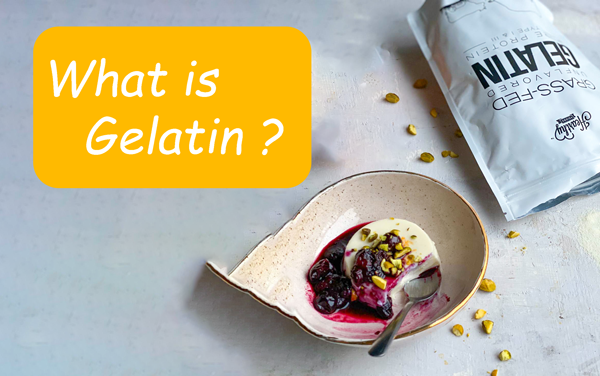
Figure no 0 What is Gelatin and where it is used
Checklist
- What is Gelatin, and how is it made?
- What are the uses of Gelatin in everyday life?
- Can vegans and vegetarians consume Gelatin?
- What is the benefit of Gelatin to the human body?
1) What is Gelatin, and how is it made?
“Gelatin is a transparent protein with no color or taste. It is made from Collagen, which is the most abundant protein in mammals ( 25% ~ 30% of total proteins ).”
It is important to note that Gelatin is not presenat in animals' bodies; it is a by-product made by processing Collagen-rich body parts in industries. It contains bovine gelatin, fish gelatin and pork gelatin according to different raw material source.
Gelatin most common kinds are food-grade gelatin and pharmaceutical-grade gelatin due to its multiple properties;
- Thickening ( main reason )
- Jelling nature ( main reason )
- Fining
- Foaming
- Adhesion
- Stabilizing
- Emulsifying
- Film-forming
- Water-binding
What is Gelatin Made of?
- “Gelatin is made by degrading Collagen-rich body parts. For example, animals' bones, ligaments, tendons, & skin, which are rich in Collagen, are either boiled in water or cooked to convert Collagen into Gelatin.”
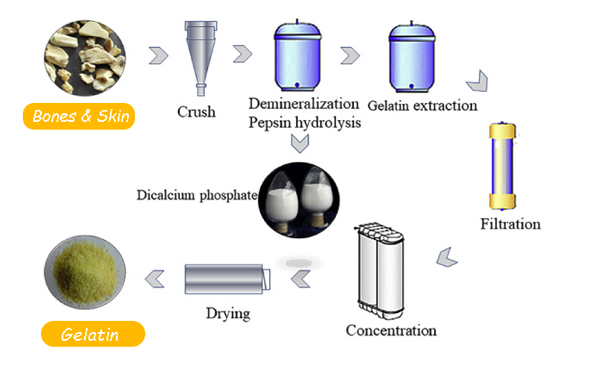
Figure no 1 Industrial Production of Gelatin
-
- Most industries around the world make Collagen in these 5-steps;
- i) Preparation: In this step, the animal parts, like skin, bones, etc., are broken down into small pieces, then soaked in an acid/alkaline solution, and afterward washed with water.
- ii) Extraction: In this second step, the broken-down bones & skin are boiled in water until all the Collagen in them is converted into Gelatin and becomes soluble in water. Then all the bones, skin, and fats are removed, leaving a Gelatin solution.
- iii) Purification: Gelatin solution still contains many trace fats and minerals ( calcium, sodium, chloride, etc. ), which are removed using filters and other procedures.
- iv) Thickening: The Gelatin-rich pure solution is heated until it is concentrated and becomes a viscous liquid. This heating process also sterilized the solution. Later, the viscous solution is cooled to convert Gelatin into a solid form.v) Finishing: Lastly, the solid Gelatin passes through a perforated holes filter, giving the shape of the noodles. And afterward, these gelatin noodles are crushed to form a powdered-form final product, which many other industries use as raw material.
2) What are the uses of Gelatin in everyday life?
Gelatin has a long usage history in human culture. According to research, Gelatin + Collagen paste was used as a glue right thousand years ago. The first-ever use of Gelatin for food and medicine is estimated to have been around 3100 BC ( Ancient Egypt period ). Going forward, around the middle ages ( 5th ~ 15th century A.D ), a jelly-like sweet substance was used in the court of England.
In our 21st century, Gelatin uses are technically limitless; we will divide the uses of Gelatin 3-main categories;
i) Food
ii) Cosmetics
iii) Pharmaceutical
i) Food
- The thickening and jellying properties of Gelatin are the main reason for its unparallel popularity in everyday food, such as;
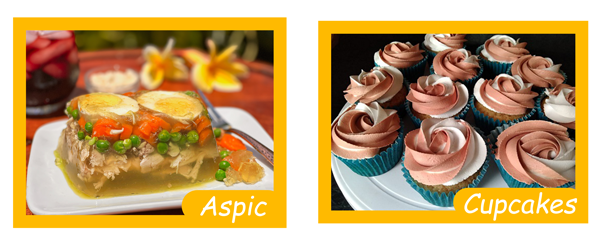
Figure no 2 Gelatin used in food
- ➢ Cakes: Gelatin makes the creamy & foamy coating on bakery cakes possible.
➢ Cream Cheese: The soft and velvety texture of cream cheese is made by adding Gelatin.
➢ Aspic: Aspic or meat jelly is a dish made by enclosing meat and other ingredient in Gelatin using a mold.
➢ Chewing Gums: All of us have eaten chewing gums, and the chewy nature of gums is all due to Gelatin in them.
➢ Soups & Gravies: Most chefs worldwide use Gelatin as a thickening agent to control the consistency of their dishes.
➢ Gummy bears: All kinds of sweets, including the famous gummy bears, have Gelatin in them, which gives them chewy properties.
➢ Marshmallows: On every camping trip, marshmallows are the heart of every campfire, and all marshmallows' airy & soft nature goes to Gelatin.
ii) Cosmetics
➢ Shampoos & Conditioners: These days, Gelatin-rich hair-care liquids are present in the market, which claims to thicken hair instantly.
➢ Face masks: Gelatin-peel-off masks are becoming a new trend because Gelatin becomes hard with time, and it peels off most skin-dead cells when you take it off.
➢ Creams & Moisturizers: Gelatin is made of Collagen, which is the main agent in making skin look younger, so these Gelatin-made skin-care products claims to end wrinkles and provide smooth skin.
Gelatin is used in many make-up and skin-care products, such as;
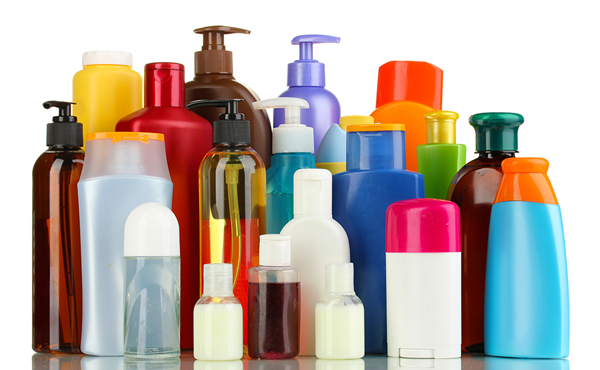
Figure no 3 Gleatin use in shampoos and other cosmetic items
iii) Pharmaceutical
Pharmaceutical is the second biggest use of Gelatin, such as;
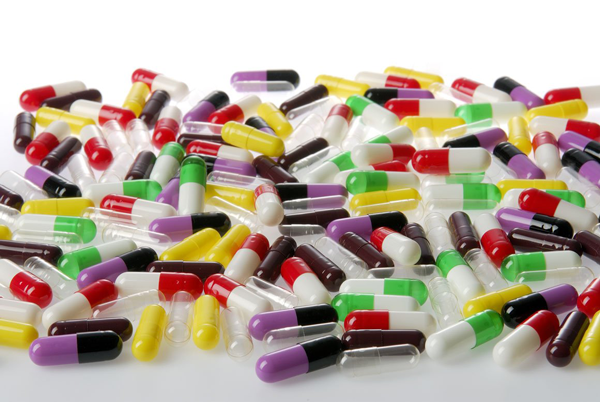
Figure no 4 Gelatin capsules soft and hard
Capsules: Gelatin is a colorless & flavorless protein with jelling properties, so it is used to make capsules that act as a covering and delivery system for many medicines & supplements.
Supplementation: Gelatin is made from Collagen, and it contains similar amino acids as Collagen, which means ingesting Gelatin will promote Collagen formation in your body and help your skin look younger.
3) Can vegans and vegetarians consume Gelatin?
“No, Gelatin is derived from animal parts, so neither vegans nor vegetarians can consume Gelatin.”
Vegetarians avoid eating animals' flesh and by-products made from them ( like Gelatin made from animal bones and skin ). However, they allow eating eggs, milk, etc., as long as animals are kept in ideal condition.
In contrast, vegans avoid animal flesh and all forms of by-products like Gelatin, eggs, milk, etc. In short, vegans think that animals are not for humans' entertainment or food, and no matter the case, they should be free & can’t be used in any way.
So, Gelatin is strictly prohibited by vegans and vegetarians as it comes from slaughtering animals. But as you know, Gelatin is used in skin-care creams, foods, & medical products; without it, thickening is impossible. So, for vegans, scientists have made many alternative substances that function as same but are not derived from animals in any way, and some of these are;
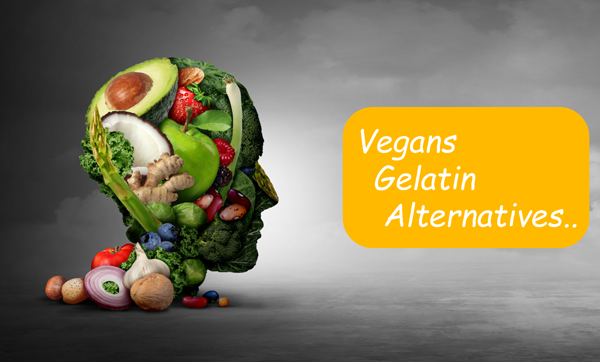
Figure no 5 Gelatin substitutes for vegans and vegetarians
i) Pectin: It is derived from citrus and apple fruits, and it can act as a stabilizer, emulsifier, jelling, and thickening agent, just like Gelatin.
ii) Agar-Agar: Also known as agarose or simply agar is the widely used substitute for Gelatin in the food industry (ice cream, soups, etc. ). It is derived from red seaweeds.
iii) Vegan Jel: As the name suggests, vegan gel is made by mixing a lot of derivates from plants such as vegetable gum, dextrin, adipic acid, etc. It gives near to results as Gelatin.
iv) Guar Gum: This vegan Gelatin substitute is derived from guar plant seeds ( Cyamopsis tetragonoloba ) and is mostly used in bakery products ( it does not work well with sauces and liquids foods ).
v) Xantham Gum: It is made by fermenting sugar with a bacteria called Xanthomonas campestris. It is widely used in bakery, meat, cake, and other food-related products as an alternative to Gelatin for vegetarians and vegans.
vi) Arrowroot: As the name suggests, arrowroot is derived from the rootstock of various tropical plants like Maranta arundinacea, Zamia integrifolia, etc. It is sold in powder form as a substitute for Gelatin for mostly sauces and other liquid foods.
vii) Cornstarch: It can also be used as a Gelatin alternative in some recipes and is derived from corn. However, there are two main differences; cornstarch thickens as it is heated, while Gelatin thickens as it cools; Gelatin is transparent, while cornstarch is not.
viii) Carrageenan: It is also derived from red seaweed as agar-agar, but they both come from different plant species; carrageenan is mainly derived from Chondrus crispus, while agar is from Gelidium and Gracilaria. A big difference between these is carrageenan has no nutritional value, while agar-agar contains fibers & many micronutrients.
4) What is the benefit of Gelatin to the human body?
As Gelatin is made from naturally occurring protein Collagen, it offers many health benefits if taken in pure form, such as;
i) Slows Skin Aging
ii) Helps in Weight Loss
iii) Promotes Better Sleep
iv) Strengthen Bones & Joints
v) Lowers Risk of Heart Diseases
vi) Protect Organs & Improves Digestion
vii) Lessen Anxiety and Keeps You Active
i) Slows Skin Aging

Figure no 6.1 Gelatin gives smooth and young skin
Collagen gives strength and elasticity to our skin, which makes our skin smooth, wrinkle-free, and soft. In kids and teenagers, Collagen levels are high. However, after 25, Collagen production starts depleting, our skin loose firmness, fine lines & wrinkles start to appear, and ultimately saggy skin in old age.
As you have seen, some people in their 20s start to look in their 30s or 40s; it is because of their poor diet ( less collagen intake ) and carelessness. And if you want to keep your skin looking soft, wrinkle-free, and young, even in your 70s, it is recommended to promote your body's collagen production and take care of your skin ( go out less in the sun, use sun creams, etc. )
But the problem here is you can’t digest Collagen directly; all you can do is take an amino acids-rich diet that makes up Collagen, and the best way to do that is to eat Gelatin because Gelatin is derivated from Collagen ( similar amino acids in their structure ).
ii) Helps in Weight Loss
It is a well-known fact that a high-protein diet can help you feel full for a long-time because proteins take more time to digest. Hence, you will have fewer food cravings, and your daily calorie intake will stay controlled.
Moreover, it is also in a study that if you consume a protein diet daily, your body will develop resistance against hunger cravings. Hence, Gelatin, which is pure protein , if taken about 20 grams daily, will help control your over-eating.
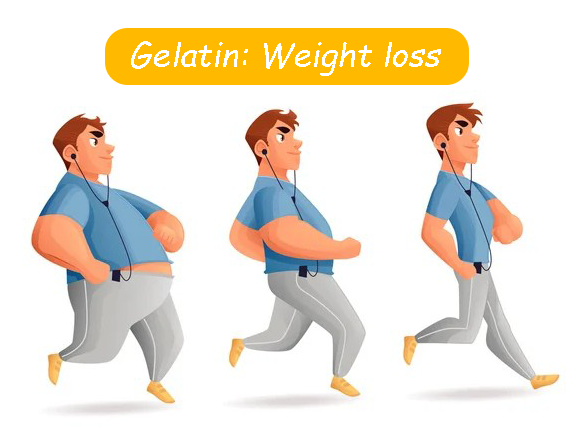
Figure no 6.2 Gelatin makes the stomach feel full and helps lose weight
iii) Promotes Better Sleep
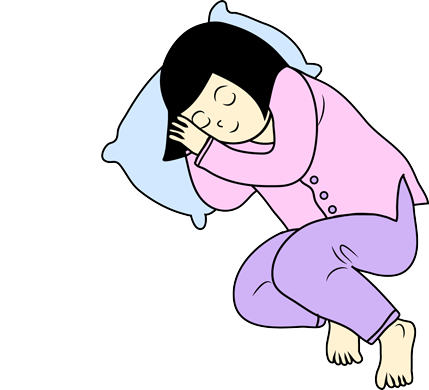
Figure no 6.3 Gelation promotes better sleeping
In a research, a group who had trouble sleeping was given 3 grams of Gelatin, while another group with the same sleeping problems was given nothing, and it is seen that people with Gelatin intake sleep a lot better than the other.
However, the research is not a scientific fact yet, because millions of factors inside and outside the body can affect the observed results. But, a study has shown some positive results, and as Gelatin is derived from natural Collagen, so daily taking 3 grams of it will not cause you any harm like sleeping pills or other drugs does.
iv) Strengthen Bones & Joints
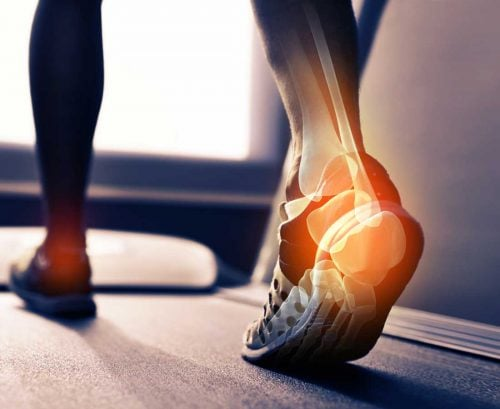
Figure no 6.4 Gelation makes collagen which forms bones' basic structure
“In the human body, Collagen makes up 30 ~ 40% of the total volume of bones. While in joint cartilage, Collagen makes up ⅔ ( 66.66% ) of the overall dry weight. Hence, Collagen is necessary for strong bones and joints, and Gelatin is the most effective way to make Collagen.”
As you already know, Gelatin is derived from Collagen, and gelatin amino acids are almost similar to Collagen, so daily eating Gelatin will promote collagen production.
Many bone-related diseases, especially in older people, like osteoarthritis, rheumatoid arthritis, osteoporosis, etc., in which bones start to weaken and joints degrade, which causes severe pain, stiffness, ache, and ultimately immobility. However, in an experiment, it is seen that people taking 2 grams of Gelatin daily show a massive reduction in inflammation ( less pain ) and fast healing.
v) Lowers Risk of Heart Diseases
“Gelatin helps neutralize many harmful chemicals, especially those which can lead to heart problems.”
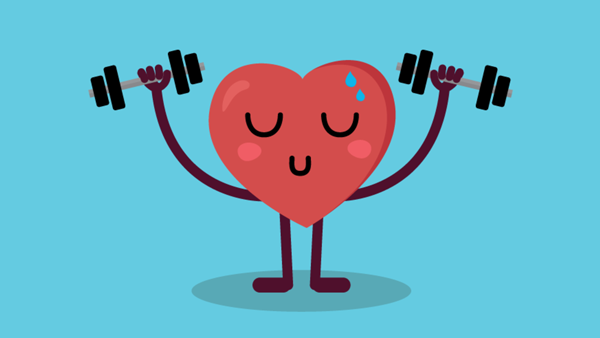
Figure no 6.5 Gelation acts as a neutralizer against harmful heart chemicals
Most of us eat meat daily, which undoubtedly helps maintain good health and control obesity. However, there are some compounds in meat, like methionine, which, if taken in excess, can cause an increase in homocysteine levels which forces inflammation in blood vessels and increase the risk of stroke. However, gelatin act as a natural neutralizer to methionine and help main homocysteine levels to prevent heart-related problems.
vi) Protect Organs & Improves Digestion
In all animal bodies, Collagen forms a protective coating on all internal organs, including the inside lining of the digestive tract. So, keeping Collagen levels high in the body is necessary, and the best way to do this is from Gelatin.
It is observed that taking Gelatin promotes gastric acid production in the stomach, which helps proper digestion of food and helps avoid bloating, indigestion, unnecessary gas, etc. At the same time, Glycine in Gelatin increases the mucosal lining on stomach walls, which helps the stomach be digestive from its own gastric acid.

Figure no 6.6 Gelatin has glycine which helps the stomach protect itself
vii) Lessen Anxiety and Keeps You Active
“Glycine in Gelatin helps keep stress-free moods and good mental health.”
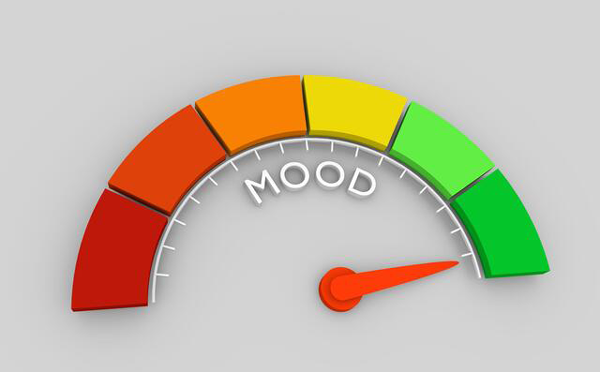
Figure no 7 Good mood due to Gelatin
Glycine is considered an inhibitory neurotransmitter, and most people take it as a stress-relieving substance to maintain an active mind. Moreover, most Spinal cord inhibitory synapses use Glycine, and its deficiency can lead to laziness or even mental problems.
So, daily eating Gelatin will ensure good glycine metabolism in the body, which will cause less stress & an energetic lifestyle.
Post time: Aug-03-2023







